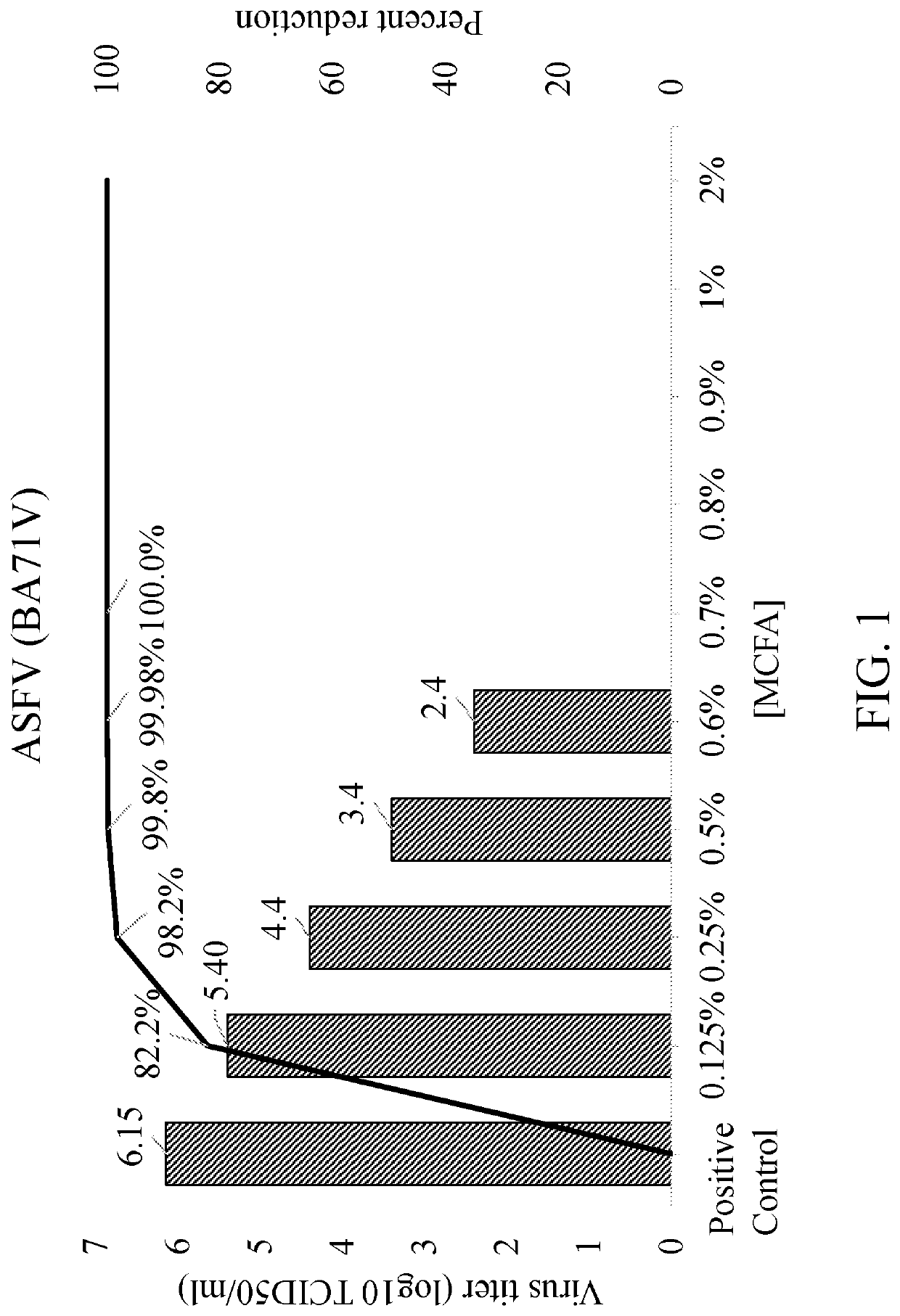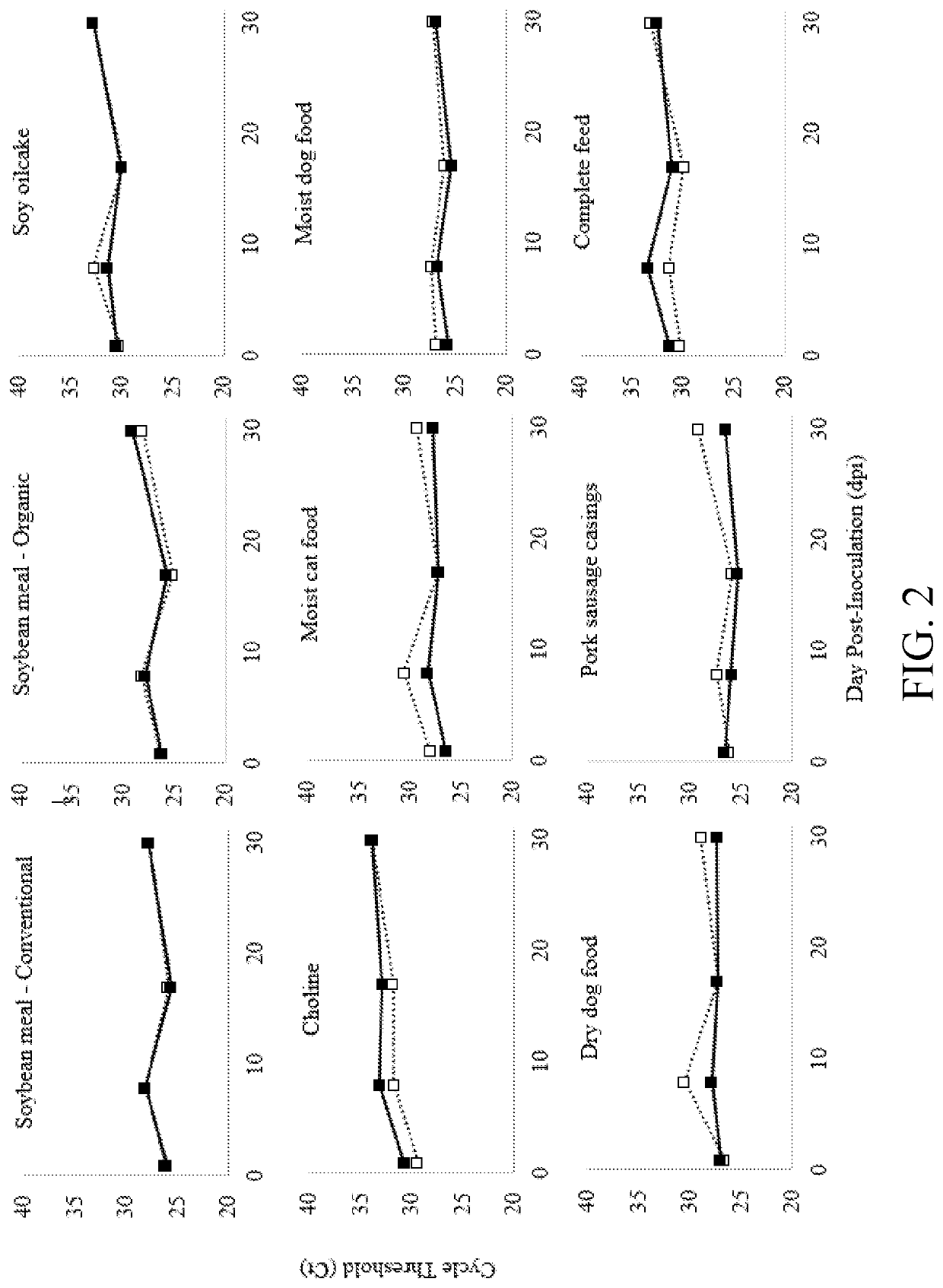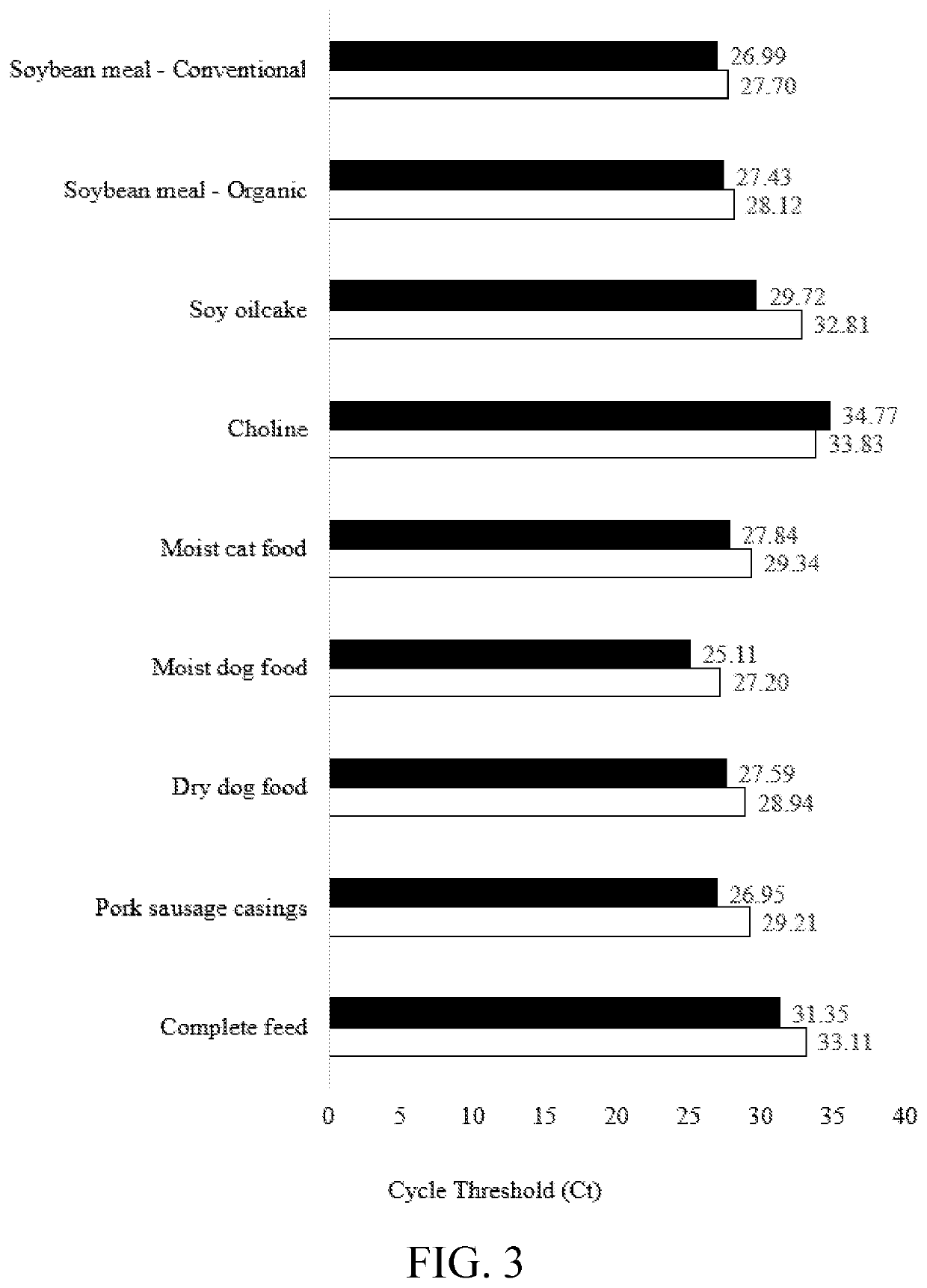Chemical mitigation of african swine fever virus and classical swine fever virus
- Summary
- Abstract
- Description
- Claims
- Application Information
AI Technical Summary
Benefits of technology
Problems solved by technology
Method used
Image
Examples
examples
[0030]The following examples set forth the effectiveness of chemical mitigation strategies on ASFV and CSFV in feed and feed ingredients. It is to be understood, however, that these examples are provided by way of illustration and nothing therein should be taken as a limitation upon the overall scope of the invention.
[0031]Protocols and procedures were developed for diluting and mixing various concentrations of a medium chain fatty acid blend (MCFA) with ASFV (BA71v isolate) and CSFV (Brescia isolate). This work has been performed in their respective cell cultures, vero cells and porcine kidney cells. As a first step, the MCFA is prepared by mixing equal volumes of C6:C8:C10 (caproic acid:caprylic acid:capric acid) for a 1:1:1 volume ratio. Second, MCFA treatments are prepared at concentrations ranging between 10% and 0.625% and mixed with a standard high concentration of virus (106 TCID50 / ml). It has been confirmed that MCFA does not disrupt the cell cultures used for these experim...
example i
African Swine Fever Virus Testing
[0032]Specific protocols and procedures were used for diluting and mixing various concentrations of a medium chain fatty acids blend in 20% DMSO with ASFV (BA71v isolate) in vero cells. As a first step, the medium chain fatty acids were prepared by mixing equal volumes of C6:C8:C10 for a 1:1:1 volume ratio in 20% DMSO. Second, medium chain fatty acids were prepared at concentrations ranging between 2% and 0.125% and mixed with a standard high concentration of ASFV (106 TCID50 / ml). Positive controls were included in each assay to determine the dose response inactivation of the virus.
[0033]Results (Table 1, FIG. 1) demonstrated that medium chain fatty acids treatments effectively inactivate ASFV to undetectable levels by indirect fluorescent antibody testing at all doses tested between 0.7% and 2.0%. Dose dependent reduction of ASFV is seen at medium chain fatty acids concentrations between 0.6% and 0.125%. At the lowest concentration of medium chain f...
example ii
Classical Swine Fever Virus Testing
[0038]The effects of MCFA on CSFV in cell culture are shown in Table 4, as well as FIG. 4 and FIGS. 5A-5C. Various levels of the medium chain fatty acid treatment (1:1:1 ratio of C6:C8:C10) were tested for efficacy in inactivating or reducing viral titers of CSFV Brescia isolate in a cell culture model. MCFA levels tested between 10% and 0.5% reduced the CSF viral titers to levels below what is detectable by indirect fluorescent antibody testing on porcine kidney cells. As shown in FIG. 5B, no CSFV was detectable after MCFA treatment. Dose-dependent reductions in CSFV viral titers were shown after exposure to MCFA at levels between 0.4% and 0.125%. The lowest MCFA inclusion rate tested (0.125%) resulted in an 82.2% reduction in viral titer when compared to the non-mitigated positive control.
TABLE 4Inactivation of CSFV (Brescia isolate) at varying concentrationsof MCFA in 20% DMSO in a cell culture model.2%1%0.5%0.25%0.125%Pos. Ctrlundil.−−−−−−−−−−−...
PUM
| Property | Measurement | Unit |
|---|---|---|
| Percent by mass | aaaaa | aaaaa |
| Percent by mass | aaaaa | aaaaa |
| Percent by mass | aaaaa | aaaaa |
Abstract
Description
Claims
Application Information
 Login to View More
Login to View More - R&D
- Intellectual Property
- Life Sciences
- Materials
- Tech Scout
- Unparalleled Data Quality
- Higher Quality Content
- 60% Fewer Hallucinations
Browse by: Latest US Patents, China's latest patents, Technical Efficacy Thesaurus, Application Domain, Technology Topic, Popular Technical Reports.
© 2025 PatSnap. All rights reserved.Legal|Privacy policy|Modern Slavery Act Transparency Statement|Sitemap|About US| Contact US: help@patsnap.com



